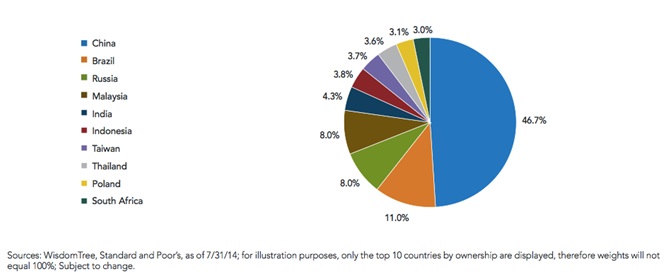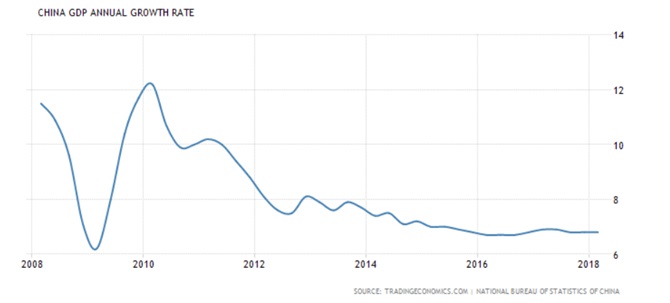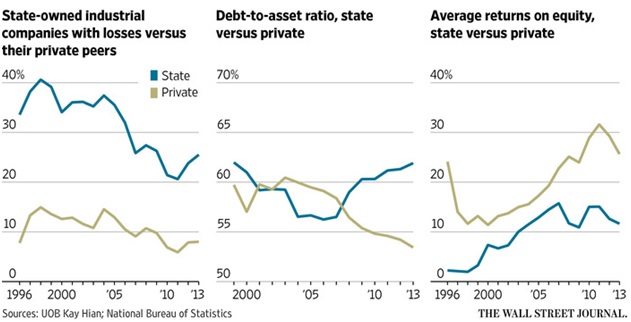China’s Share in The World’s Top 500 Companies Larger than Ever
By Harold Murphy
 清华大学国情研究院院长胡鞍钢先生于几年前在国资委的某次活动中表示,到2020年,中国国有企业的数量将在世界500强榜单中占据130席。今天,我国正走在实现这一目标的道路上:如果我们把世界500强榜单视为企业财富的实力标准,那么我国企业在过去的十几年中确实取得了巨大的进步。2000年,我国上榜企业只有10家,2010年提升至46家;7年后的2017年,世界500强榜单上有109家中国企业跻身其中,这一增长速度足以令国际瞩目。
清华大学国情研究院院长胡鞍钢先生于几年前在国资委的某次活动中表示,到2020年,中国国有企业的数量将在世界500强榜单中占据130席。今天,我国正走在实现这一目标的道路上:如果我们把世界500强榜单视为企业财富的实力标准,那么我国企业在过去的十几年中确实取得了巨大的进步。2000年,我国上榜企业只有10家,2010年提升至46家;7年后的2017年,世界500强榜单上有109家中国企业跻身其中,这一增长速度足以令国际瞩目。
与此相反,尽管美国仍是世界500强榜单上名列企业最多的国家,但榜单中的美国公司数量却在大幅减少。对于美国这个全球最大的经济体来说,这一趋势非常不利。在2000年有179家美国公司上榜,而2017年,美国只有132家公司跻身世界500强。
上榜的中美公司中,除了所属国家不同,还有一个重大的异同之处,那就是公司的所有权。在这109家中国企业中,多数是国有银行和国有石油公司。国家的支持对企业上榜起到了重要作用。榜单中,中石油、中石化、国家电网等大型国有企业集团赫然在列。但是,我国大型国有企业增长的障碍之一在于对国内市场的过分关注,缺乏国际扩张能力。波士顿咨询集团曾在其博客中指出:中国企业缺乏打造全球品牌的经验,也不了解其他地区消费者的偏好。此外,考虑到亏损、债务或资产比和平均股本回报率时,我国国有企业也远远落后于私营企业。
然而,随着中国国内市场的进一步全球化以及初创企业数量的不断增加,我们可能会看到越来越多的创新型科技公司进入世界500强榜单,例如阿里巴巴、腾讯或百度等拥有雄厚实力与前沿技术的大型私营企业。
Director of the Institute of Contemporary China Studies at Tsinghua University, Mr. Hu Angang, said at a SASAC event a few years ago that by 2020, the number of Chinese state-owned companies would reach 130 in the 500 largest companies in the world. And as of 2017, China is well on its way to achieve this figure.
If we take Fortune’s Global 500 list as a benchmark for the world’s largest companies, then China has made significant progress as compared to the previous years. For comparison, China had only 10 companies appearing in the list in the year 2000, and 46 companies in 2010. Seven years later, the 2017 Fortune Global 500 list hosts a whopping 109 Chinese companies, all of which are among the largest companies in the world by revenue.
On the contrary, the number of US-based companies on the list has declined. While the US still has the largest number of companies on the list, the trend is heavily negative for the largest economy in the world. In 2000, 179 US companies had made it on the list; in 2010 the number had fallen to 139; and according to the latest available data, in 2017 the US has 132 companies among the 500 largest in the world.
Largest Chinese Companies Still State-Owned
However, one key distinction between the Chinese and US performance on the list is the ownership of the companies. Among the 109 Chinese companies, most are state-owned banks and oil companies controlled by the central government through SASAC (State-Owned Assets Supervision and Administration Commission). SASAC is the governing body that makes the most important operative decisions, such as appointing CEOs and deciding on large investments. This state support acts as heavy wind backing the largest Chinese companies on the list, and Mr. Hu Angang’s comments from the beginning of the article additionally emphasize how important it is for the Chinese government to increase the revenue of its companies.
 Figure 1 State-Owned Enterprises by Country, 2014. China leading the way
Figure 1 State-Owned Enterprises by Country, 2014. China leading the way
With the recent economic slowdown, increased regulatory requirements and an enormous value of bad loans, Chinese banks have also experienced some difficulties. For example, ICBC and China Construction Bank – both Chinese banking goliaths – retained the first two spots in Forbes’ 2017 Global 2000, which ranks large public companies by revenue, profits, assets and market capitalization. Still, this is a lower result as compared to 2015, when Chinese companies held the top four positions in the list.
China’s GDP growth rate didn’t help either. While the annual growth is still a respectable 6.8% year-on-year, it’s far below the two-digit growth that China averaged over the previous decade.
 In line with the GDP growth, a handicap for the growth of large Chinese state-owned companies may be their focus on the domestic market. As Boston Consulting Group partners stated in their BCG Perspectives blog, Chinese companies lack the experience of building a global brand and the knowledge of consumer-preferences in other global markets. In the following lines, a brief overview of top three Chinese companies in the Fortune’s Global 500 list is provided.
In line with the GDP growth, a handicap for the growth of large Chinese state-owned companies may be their focus on the domestic market. As Boston Consulting Group partners stated in their BCG Perspectives blog, Chinese companies lack the experience of building a global brand and the knowledge of consumer-preferences in other global markets. In the following lines, a brief overview of top three Chinese companies in the Fortune’s Global 500 list is provided.
China’s State Grid
With more than 900,000 employees and $315 billion in revenue, China’s state-owned electric utility provider, State Grid holds a high second place on the Fortune Global 500 list, ranking second only to US-based Wal-Mart. The company was formed in 2002 following China’s power sector reform, and today manages five regional power grid companies along with 24 electric power companies.
State Grid has been on Fortune’s Global 500 list for 17 consecutive years, which is no wonder considering the size of the company and almost $490 billion worth of assets. The company reported a total profit of $9.5 billion in 2017 – 6.2% lower as compared to the previous year.
Sinopec Group
Another state-owned giant that jumped up one position to become the third largest company in the world is Sinopec Group – China’s oil and gas company. With more than 713 thousand employees, the company focuses on a variety of energy sources covering oil, coal, electricity and steam, and is the third-largest chemical producer since 2014.
Total revenue of Sinopec group is $267 billion and total profits are reported to be $1.25 billion – a -9.1% revenue change and a whopping -65% of profit change as compared to 2016, when low energy prices hit these kinds of companies hard.
China National Petroleum
A remarkable 1,512,048 workers work for China National Petroleum – the world’s fourth largest company by revenue. CNPC covers the complete oil and gas industry value chain – from onshore and offshore oil production to other energy-related investments. Revenue touched $262 billion but decreased by 12.3% as compared to 2016, and reported profits totaled $1.86 billion – just like in the case of Sinopec Group, again a significant decrease of 73.7% as compared to 2016.
Performance Metrics: State-Owned vs. Private
Chinese companies experienced a significant rise over the last two decades and managed to achieve a ten-fold increase in the list of the world’s largest companies – from just 10 companies in 2000, Chinese companies accounted for more than 20% of the list in 2017. While most of the listed companies are still state-owned, this isn’t necessarily a drawback for them. In fact, the support of the Chinese government played a significant role in the growth of those companies. However, when considering losses, debt-to-asset ratios and average returns on equity, China’s state-owned companies lag behind their private peers.
 Figure 2 Performance Metrics of State-Owned vs. Private Companies in China
Figure 2 Performance Metrics of State-Owned vs. Private Companies in China
However, a notable disadvantage of most of the Chinese companies in the list is the absence of international expansion, beside regional expansion and agreements with Mongolia and Russia on large energy projects. Still, with the further globalization of China’s domestic market and the rising number of start-ups, we may witness a growing number of innovative tech companies making it to the list, such as Alibaba, Tencent or Baidu.